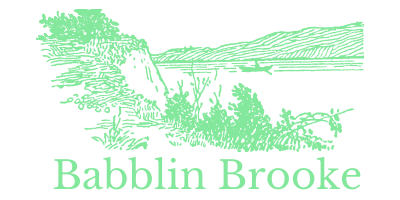Many individuals find themselves trapped in a cycle of living paycheck to paycheck, unsure of how to break free. This financial struggle can lead to stress and limit opportunities for saving and investing. To stop living paycheck to paycheck, one must adopt clear budgeting strategies and prioritize savings, even if it’s a small amount.
Understanding income and expenses is essential for anyone trying to improve their financial situation. Creating a budget allows individuals to see where their money is going and identify areas where cuts can be made. With discipline and intentional planning, it is possible to shift from a mindset of scarcity to one of abundance.
Savings can begin by setting aside even a modest amount from each paycheck. Automating this process can significantly help in building a habit of saving. By taking concrete steps towards financial stability, individuals can escape the paycheck-to-paycheck cycle and start securing their financial future.
Understanding Your Financial Situation
Gaining clarity on one’s financial situation is the first step toward improving it. By tracking income, analyzing monthly expenses, and recognizing spending habits, individuals can identify areas for change.
Track Income and Monthly Expenses
To understand financial standing, he must first track his income. This includes all sources, such as salary, bonuses, and any side hustles.
Next, documenting monthly expenses is crucial. This involves categorizing spending into fixed and variable expenses, such as:
- Fixed Expenses: Rent/mortgage, utilities, insurance
- Variable Expenses: Groceries, entertainment, dining out
Maintaining a detailed record for at least three months will provide insights into spending patterns. This practice lays the foundation for budgeting effectively. It helps reveal potential areas to cut back and prioritize savings.
Identify Spending Habits
Recognizing one’s spending habits creates opportunities to adjust behaviors. A review of categorized expenses can highlight where money is spent impulsively.
Questions to consider include:
- How often is money spent on non-essentials?
- Are there subscriptions that go unused?
It’s beneficial to create a list of discretionary expenditures, allowing for a visual representation of unnecessary spending. This identification process can motivate changes that help redirect funds toward savings goals.
Recognize Lifestyle Inflation
Lifestyle inflation, often termed lifestyle creep, occurs when an individual’s expenses rise alongside increases in income. As income grows, spending often follows suit, leaving little to save.
To combat this, an individual should maintain previous frugal habits despite the financial uplift. Setting limits on new expenses can help retain focus on savings rather than luxuries.
Establishing a savings goal, such as a specific percentage of income or a savings target, provides direction. Prioritizing saving over spending fosters long-term financial stability and reduces reliance on paycheck-to-paycheck living.
Building a Sustainable Budget
Establishing a sustainable budget is essential for financial stability. It involves careful planning, effective expense management, and creating automated systems for savings. Implementing these strategies can significantly enhance one’s ability to save money and reduce the stress of living paycheck-to-paycheck.
Create a Budget That Works
To create a budget that works, begin by tracking all income sources and expenses. Categorize expenses into fixed (e.g., rent, utilities) and variable (e.g., entertainment, groceries) categories. This helps in identifying essential versus discretionary spending.
One effective approach is the 50/30/20 rule: allocate 50% of income to needs, 30% to wants, and 20% to savings or debt repayment. Utilize budgeting tools like apps or spreadsheets to maintain visibility over finances. Regularly review the budget to ensure it remains accurate and relevant to lifestyle changes.
Economize and Cut Unnecessary Expenses
To economize effectively, individuals should scrutinize their spending habits. Begin by reviewing monthly subscriptions or memberships that may no longer be useful. Consider alternatives, like canceling unused gym memberships or streaming services.
Meal planning can also lead to significant savings. Preparing meals at home reduces food costs and cuts down on impulse purchases at restaurants. Additionally, using coupons and shopping during sales helps in lowering grocery bills. Implementing these small changes can lead to substantial savings over time.
Implement the Envelope Method
The Envelope Method involves allocating cash for specific spending categories. Each envelope represents a budget category, such as groceries or entertainment. When the cash is gone from an envelope, the spending in that category stops.
This method encourages mindful spending and helps avoid overspending in any area. It can be particularly useful for those who find it difficult to track expenses. The physical act of handling cash may also create a stronger awareness of spending habits.
Automate Your Finances
Automating finances simplifies the budgeting process. Setting up automatic transfers to savings accounts ensures consistent contributions without manual effort. Individuals can arrange for a portion of their paycheck to be directly deposited into a savings account.
This method minimizes the temptation to spend money intended for savings. Additionally, automating bill payments prevents late fees and maintains a good credit score. Financial automation fosters a more organized approach to managing money, which enhances overall budgeting effectiveness.
Accelerating Your Savings and Debt Payoff
Building savings while managing debt requires strategic actions. By establishing a solid foundation through an emergency fund, setting clear financial goals, prioritizing debt repayment, and exploring ways to increase income, anyone can significantly improve their financial situation.
Build an Emergency Fund
An emergency fund acts as a financial buffer against unexpected expenses. Experts recommend saving three to six months’ worth of living expenses. This fund can reduce the reliance on credit cards and loans during emergencies, preventing the accumulation of high-interest debt.
To build this fund, start small. Aim to save $500 initially, then gradually increase it. Set up a dedicated savings account to avoid the temptation of spending this money. Automate savings by setting up regular transfers from a checking account.
Set Financial and Savings Goals
Clear financial goals help maintain focus and motivation. They might include saving for a down payment on a house, paying off credit cards, or accumulating a certain amount in savings. Break these goals into smaller, manageable tasks.
For example, if the goal is to save $5,000, create a monthly savings plan. Allocating funds each month ensures steady progress. Utilize tools like budgets and apps to track financial progress, making adjustments when necessary.
Pay Off High-Interest Debt
High-interest debt, such as credit card debt, can hinder savings efforts. Prioritizing debt repayment can free up funds for saving. Strategies include the snowball method or the avalanche method.
In the snowball method, individuals pay off smaller debts first, gaining momentum. The avalanche method focuses on debts with the highest interest rates, reducing overall interest paid. Redirect the money saved on interest towards a savings account to build wealth.
Increase Your Income
Increasing income provides additional funds for savings and debt repayment. Individuals can explore side hustles, such as freelancing or part-time jobs, to supplement their income.
Asking for a raise at one’s current job is another option. Collect data on industry salary averages to support the request. Utilizing skills and talents in a freelance capacity can yield significant income while allowing flexibility.
Consider combining strategies. For instance, one might manage a side hustle while also aggressively paying down debt. Each approach contributes to financial stability and growth.
Staying Motivated and Ensuring Long-Term Success
Maintaining motivation and securing a stable financial future requires discipline and effective strategies. By tracking progress, planning for unexpected expenses, and finding enjoyment in affordable activities, individuals can build a robust savings plan.
Track Your Financial Progress
Tracking financial progress is essential for motivation. Individuals should set specific savings goals, such as an emergency fund, down payment for a home, or retirement savings.
A monthly budget can serve as a practical tool. This budget should detail income and expenses.
Using apps or spreadsheets can help visualize this progress. Regular monitoring reveals trends and allows for adjustments, fostering accountability.
Celebrating small milestones, like reaching 25% of a savings goal, reinforces positive habits. It encourages continued effort toward the ultimate goal.
Plan for Unexpected Expenses
Unexpected expenses can derail financial plans. Creating an emergency fund should be a priority. This fund should ideally cover three to six months of living expenses.
Allocating a specific amount each month to this fund cultivates resilience. Individuals can manage surprise costs, such as car repairs or medical bills, without disrupting their savings journey.
Regularly reviewing and updating budgets helps anticipate future expenses. This proactive approach reduces stress related to financial uncertainty.
Maintain a Healthy Financial Future
To ensure long-term success, individuals must prioritize their financial health. They should focus on reducing debt, as high-interest debts can hinder saving abilities.
Creating a debt repayment plan can help prioritize payments. Individuals can pay off debts from highest to lowest interest rates or use the snowball method for motivation.
Diversifying income streams is another effective strategy. Part-time jobs or freelance work can supplement income, fostering a stronger financial foundation.
Long-term investments, such as retirement accounts, are vital. They provide growth opportunities, enhancing financial stability.
Enjoy Free or Low-Cost Activities
Finding enjoyment without financial strain is crucial for motivation. Individuals can seek free or low-cost activities to enrich their lives and provide joy.
Community events, local parks, and libraries often offer resources and activities without charge.
Participating in group outings with friends, such as hiking or volunteering, fosters connections without high costs.
Additionally, hosting game nights or potlucks can be enjoyable and cost-effective. Individuals can prioritize relationships and experiences that align with their financial goals.






Leave A Comment